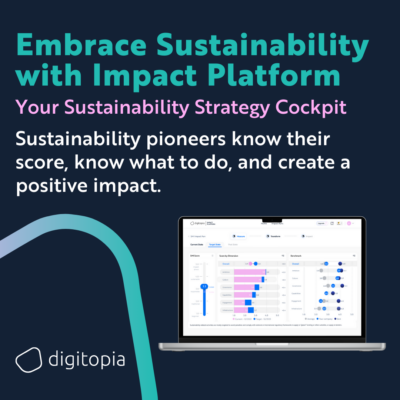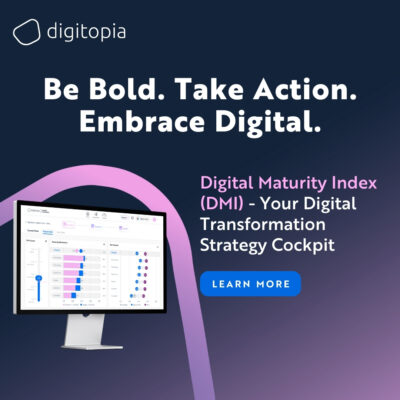
In today’s corporate landscape, “sustainability” often appears as a bullet point on investor decks or marketing slides. Many companies tout green initiatives, reduce some single-use plastics, or publish annual ESG (Environmental, Social, and Governance) reports—hoping to appease stakeholders and fend off activist criticism. Yet, the real opportunity lies far deeper: sustainability can be a core strategic driver that differentiates a business, attracts loyal customers, sparks innovation, and fortifies the bottom line.
This is the story of David Morales, the newly appointed Chief Sustainability Officer at Viridi Solutions, a global manufacturer of agricultural and construction machinery. Viridi was facing mounting pressure from investors, customers, and regulators to show concrete environmental progress—and not just pay lip service. David’s challenge was to move beyond superficial “greenwashing” and embed sustainability into the company’s DNA, turning it into a genuine source of competitive advantage. His journey reveals the leadership, operational, and cultural transformations required to make sustainability truly strategic.
The Mandate for Change
Viridi Solutions was once a market leader, pioneering durable machinery that powered farms and construction sites worldwide. But over the last decade, competitors began offering more eco-friendly, energy-efficient technologies. Customer expectations changed. Regulators demanded lower carbon footprints. Activist shareholder groups demanded ambitious emission targets. Viridi, however, was weighed down by legacy practices and an aging product line that consumed too much energy and produced too much waste.
The board recognized the risk. They believed they needed a fresh perspective—a leader who could elevate sustainability beyond a side project. Enter David Morales, an engineer by training who had spent years in the automotive sector leading zero-emissions initiatives. His track record of balancing business realities with visionary targets made him the ideal candidate to drive a sustainability overhaul at Viridi.
The CSO Role:
While many executives still saw “sustainability” as primarily compliance and PR, David convinced the board that a CSO role must hold real strategic influence. He negotiated a direct reporting line to the CEO, seats on key committees, and a dedicated budget for driving change. This was his foundation for ensuring that sustainability wouldn’t be pigeonholed as “someone else’s concern.”
Defining Success:
The board’s mandate was straightforward yet daunting: reduce Viridi’s carbon footprint by 30% within five years, streamline waste, expand circular-economy strategies, and reclaim lost market share through greener product lines. David’s personal mission? Prove that doing good for the planet can go hand-in-hand with improving revenue and profitability.
Diagnosing Greenwashing and Cultural Blind Spots
Upon arrival, David embarked on a listening tour, meeting everyone from the CFO and CTO to plant managers and frontline workers. He inspected production lines and joined design teams brainstorming the next generation of machinery. He quickly identified symptoms of “greenwashing”—where the company promoted sustainability slogans externally but wasn’t deeply committed internally:
Fragmented ESG Efforts: Multiple departments claimed to do “something green,” but initiatives rarely aligned. Sustainability reporting was inconsistent.
Tick-the-Box Compliance: The legal department tracked regulations, but there was little ambition to exceed mandates.
Marketing Over Substance: Ad campaigns boasted “eco-friendly solutions,” yet product designs hadn’t changed significantly in years.
Lack of Buy-In: Many leaders considered sustainability an expense or a distraction. They felt it slowed innovation or threatened profits.
David also discovered pockets of deep passion. Younger engineers were eager to adopt cleaner technologies. Some supply chain managers wanted greener procurement practices. A few mid-level leaders recognized that future success depended on taking bold action. These internal champions gave David hope that cultural change was possible.
Root Causes of Resistance
He learned that cynicism ran high because past “eco initiatives” faltered in the face of cost concerns. Employees had grown skeptical: “Will we commit real resources this time, or is it another PR stunt?” David vowed to prove that sustainability could generate returns, reduce risks, and strengthen brand loyalty. But first, he had to tackle the entrenched culture that equated sustainability with extra cost and negligible benefit.
Building the Business Case for Sustainability
David realized that no matter how urgent climate change felt, Viridi’s leadership would only embrace sustainability if it made business sense. So, he started crafting a business case that aligned green objectives with financial outcomes, focusing on three pillars:
Cost Savings & Efficiency
- Reducing energy consumption in manufacturing processes could lead to 5-10% cost reductions.
- Streamlining waste disposal and recycling metals could yield significant operational savings.
Revenue Growth & Competitive Differentiation
- Customers increasingly demanded eco-friendly machinery, especially in regions with stricter emissions laws.
- Winning these market segments would open new revenue streams and improve brand equity.
Risk Mitigation & Regulatory Compliance
- Avoiding future penalties and meeting upcoming regulations would protect revenue.
- Keeping pace with competitor innovations in energy efficiency would prevent market share erosion.
David compiled industry data, case studies, and pilot outcomes from his automotive background. He presented it to the leadership team in a well-structured pitch. The CFO initially balked at the upfront costs, but David pointed to how these expenditures would pay for themselves over time. The CEO, seeing the intensifying demands of shareholders and environmental watchdogs, grew receptive. Though not everyone became an instant sustainability convert, David’s logical business framework softened the edges of resistance.
The Green Strategy Rollout
With conditional buy-in from leadership, David began rolling out a Green Strategy anchored in four core initiatives:
Eco-Efficient Manufacturing
- Shift to renewable energy sources for factories.
- Retrofit older plants with energy-saving technology (e.g., improved insulation, LED lighting, smarter HVAC).
- Adopt lean production methods to minimize raw material usage and reduce scrap.
Sustainable Supply Chain
- Implement stricter supplier audits for environmental compliance.
- Encourage suppliers to reduce packaging, adopt sustainable materials, and optimize logistics.
- Form strategic partnerships with suppliers offering recycled or biodegradable components.
Product Innovation for Lower Emissions
- Invest R&D capital in new engine designs or battery technologies that cut emissions by 20-30%.
- Pilot a “modular design” approach, making machinery easier to upgrade, maintain, and refurbish.
- Develop software analytics that optimize energy usage in customers’ daily operations.
Circularity & End-of-Life Programs
- Launch machinery buy-back and recycling programs, offering discounts on new units for returning old equipment.
- Set up refurbishing centers where machinery can be updated or repaired rather than discarded.
- Explore second-life use for components, reducing total resource consumption over a product’s lifecycle.
David established clear KPIs and timelines for each initiative. He hired a small but dedicated Sustainability Office to oversee progress. Critically, he ensured that each initiative had joint sponsorship from business leads—tying success or failure directly to their performance evaluations. This cross-functional ownership prevented the “that’s David’s sustainability project, not mine” mentality.
Early Wins—Pilots and Prototypes
David knew talk alone wouldn’t convert skeptics. He needed early wins to build credibility and momentum. So, he championed a series of pilot projects:
Solar Roof on the Main Plant: Installing solar panels on Viridi’s largest manufacturing site. In six months, the site cut its grid energy reliance by 15%, yielding cost savings of $500,000 per year.
Optimized Production Lines: Partnering with the COO to automate a previously manual assembly process. The new system used sensors to adjust power usage in real time, reducing energy consumption by 20%.
Sustainable Packaging: Convincing the supply chain team to test biodegradable packaging for replacement parts. This reduced plastic waste by 60% in pilot markets. Customers responded positively, praising Viridi’s eco-friendly approach.
Although each pilot was relatively small-scale, the cumulative effect was powerful. Executives took note of the real, measurable benefits. Communication about these pilots—complete with data, cost figures, and employee testimonials—rolled out in company newsletters and at town halls. Enthusiasm started to build, and cynics began to think: “Maybe this is different from before.”
Internal Resistance and Skepticism
Despite positive momentum, David faced ongoing resistance. Some senior leaders still felt the pace of change was too fast or that resources should focus on “core business.” Others worried about alienating existing suppliers or raising manufacturing costs. Some longtime employees murmured that “we’re losing sight of what made us successful in the first place.”
David approached resistance with a two-pronged strategy:
Empathy and Listening: He spent extra time with dissenting managers, understanding their anxieties—about budgets, job security, or strategic shifts. He validated their concerns and explored compromises where possible.
Consistent, Fact-Based Communication: He hammered home the performance metrics of pilot successes, carefully explaining the long-term ROI. He also shared examples from other industries to show that advanced sustainability could yield higher margins.
While not everyone flipped overnight, David chipped away at the negativity by blending empathy with evidence. He highlighted the broader market context—competitors were moving faster on eco-innovation, and investors had begun tying executive compensation to ESG scores. Over time, the pragmatic case for sustainability grew too big to ignore.
Customer and Market Validation
To secure broader buy-in, David turned his attention to customers—the farmers, builders, and distributors who used Viridi’s machinery daily. He launched a series of customer roundtables, focusing on eco-conscious segments. The farmers shared how new regulations were forcing them to track carbon emissions and adopt climate-smart practices. Construction firms wanted machines that met green building standards. Many were willing to pay a premium if Viridi could demonstrate tangible environmental benefits.
- These roundtables proved to be a goldmine of market insights:
- Customers were hungry for data-driven intelligence to optimize fuel or energy usage.
- They prized brands that helped them achieve their own sustainability goals.
- They wanted transparent life-cycle assessments, showing how each piece of machinery impacted the environment from cradle to grave.
David relayed these learnings to product development, marketing, and sales, culminating in new “green solution bundles.” These bundles combined the updated, energy-efficient machinery with software that tracked usage and emissions, plus a buy-back agreement to ensure responsible disposal. Sales quickly saw an uptick in demand from customers who valued these integrated offers. This market validation emboldened the rest of the C-suite: sustainability was clearly a growth driver, not just a cost center.
Embracing the 3H Approach
David’s leadership style reflected the 3H model—Head, Heart, and Hands—ensuring that sustainability resonated on multiple levels within Viridi:
Head (Logic and Strategy)
- He leveraged data, ROI calculations, regulatory insights, and competitor analyses to build a watertight business case.
- He used structured frameworks for prioritizing initiatives, ensuring everyone saw the bigger picture, not just siloed tasks.
Heart (Empathy and Purpose)
- He connected sustainability to a greater mission: making farming and construction safer, cleaner, and future-proof.
- He recognized employees’ emotional ties to the company’s legacy and assured them that green transformations would also preserve Viridi’s heritage of quality.
Hands (Action and Execution)
- He launched pilots, prototypes, and iterative improvements to show quick wins.
- He mandated regular progress reviews, celebrating successes and confronting challenges in real time.
This balanced approach helped David navigate the technical complexities, address cultural inertia, and deliver tangible outcomes that people could see and feel.
Scaling Up—From Pilots to Enterprise-Wide Adoption
After a year of successful pilots, David began scaling up the most promising initiatives across the organization:
Full-Scale Solar Conversion: Viridi committed to powering 50% of its global manufacturing footprint with renewable energy within three years.
Green Procurement Policy: A new set of supplier criteria mandated specific eco-standards, leading to high-profile contract renegotiations. Some old suppliers were replaced by greener alternatives, while others upgraded their processes.
Circular Economy Programs: Every major product line now had a buy-back or refurbishment option, marketed as “Machine Life Extender.” This not only appealed to customers focused on sustainability but also became an additional revenue stream.
Scaling brought its own complexities. The finance team worried about capital expenditures. The sales force needed training on how to position new eco-friendly offerings. But the cross-functional collaboration David had seeded paid dividends. Executives recognized that big changes require integrated planning, and they rallied behind David’s blueprint. Meanwhile, outside stakeholders—like government agencies and investors—took note of Viridi’s deeper commitment, further encouraging the journey.
Pushback from Short-Term Thinkers
Despite successes, some board members and high-level leaders still prioritized short-term profit over long-term sustainability. A heated board meeting arose when quarterly margins dipped slightly due to increased R&D spend and supplier transitions. “Aren’t we pushing this eco-agenda too far, too fast?” an influential board member asked. “The market might not be ready, and we could risk revenue.”
David calmly presented data on the lifetime value of sustainable products, including brand loyalty, reduced operating costs for customers, and decreased legal risk. He showed a timeline forecasting when these investments would yield net-positive returns. Additionally, he emphasized that certain large clients were beginning to require robust sustainability metrics in their RFPs—noncompliance would cost Viridi major contracts.
Ultimately, the board granted David continued support. This incident underscored a critical lesson: even with strong progress, sustainability champions must constantly reaffirm the business logic to those fixated on near-term financials.
Cultural Transformation Takes Root
By the end of his second year, David noticed a growing cultural shift within Viridi:
Employee Engagement: Internal surveys showed a marked increase in pride among factory workers, engineers, and sales reps, who felt part of a meaningful mission.
R&D Evolution: More than half of the company’s R&D budget was now earmarked for cleaner engines, electric drivetrains, and advanced materials that reduced lifetime emissions.
Sustainability Champions: Mid-level leaders began proactively proposing new green ideas, from water conservation to forging local supply partnerships that reduced freight miles.
Customer Partnerships: Large agricultural groups and construction firms praised the new product lines. A major European retailer singled out Viridi’s refurbished machinery program as “the future of construction equipment.”
David recognized that culture change is never instant or linear. But each success fueled the next, creating a positive feedback loop. Skeptics turned into cautious supporters, then eventually became allies once they saw real results.
Measuring Impact and Sharing the Story
To sustain credibility, David made transparent reporting a cornerstone. He established an annual sustainability report—no longer a fluffy PR piece, but a rigorous, data-driven publication aligned with recognized ESG frameworks. The report detailed:
Carbon Emissions: Viridi tracked a 12% reduction in overall carbon intensity.
Operational Savings: Energy cost savings across factories climbed into the millions of dollars annually.
Circular Economy Impact: Thousands of refurbished machines sold, preventing tons of steel and plastics from entering landfills.
Customer Testimonials: End users highlighted real-world improvements, from lower fuel bills to easier maintenance.
Viridi’s marketing team packaged these insights into compelling stories to engage customers and shareholders alike. Investor relations improved, as analysts recognized the synergy of sustainability-driven growth. The brand also gained broader acclaim in industry awards that recognized innovation and environmental leadership.
Sustainability as a Competitive Advantage
David Morales’ journey at Viridi Solutions exemplifies how a determined and strategic Chief Sustainability Officer can steer a company from superficial greenwashing to a genuine, long-term sustainability transformation. By building a robust business case, fostering small wins, broadening stakeholder buy-in, and embedding green thinking into every facet of the organization, David helped Viridi harness sustainability as a competitive advantage—not just a compliance checkbox.
Key Takeaways for Leaders:
Elevate Sustainability to Strategy: Grant sustainability real influence at the executive table, with clear authority to shape major decisions.
Address Cynicism and Cultural Biases: Acknowledge past failures, show empathy for skeptic concerns, and use data to counter greenwashing assumptions.
Launch Pilots for Early Momentum: Quick wins validate the business case and dispel myths. Scale those pilots into enterprise-wide reforms.
Embed in Operations and Products: From factories to R&D, ensure sustainability is integrated into the company’s core competencies.
Communicate and Celebrate: Share success stories with employees, investors, and customers. Make them part of the transformation narrative.
Balance Short-Term Pressures with Long-Term Value: Stay resolute when quarterly results fluctuate, always underscoring the bigger strategic vision.
Ultimately, sustainability done right is more than altruism—it’s a way to future-proof the business, resonate with evolving market demands, and build loyalty among employees and customers. As David Morales and Viridi Solutions discovered, a serious commitment to sustainability isn’t a limitation. It’s a catalyst for innovation, agility, and holistic success that endures well into the future.
Become a Sustainability Champion
Evaluate Your Current State: How many of your company’s green initiatives are token efforts versus transformative changes?
Quantify the Returns: Show leadership the concrete business benefits of going greener—whether in cost savings, new market opportunities, or risk reduction.
Forge Partnerships: Collaborate with suppliers, customers, and other stakeholders who share a commitment to sustainable progress.
Communicate Relentlessly: Celebrate every milestone, however small, and keep the momentum alive through compelling storytelling.
Stay the Course: As with all transformations, expect resistance and skepticism. Counter it with evidence, empathy, and a steady commitment to the long game.
Building a sustainable enterprise isn’t just the right thing to do for the planet. It’s also a profound driver of innovation, resilience, and trust—key ingredients for any company aiming to thrive in the coming decades. By following David Morales’ example, leaders everywhere can bring authentic change to their organizations, forging a more equitable and prosperous future for all.













